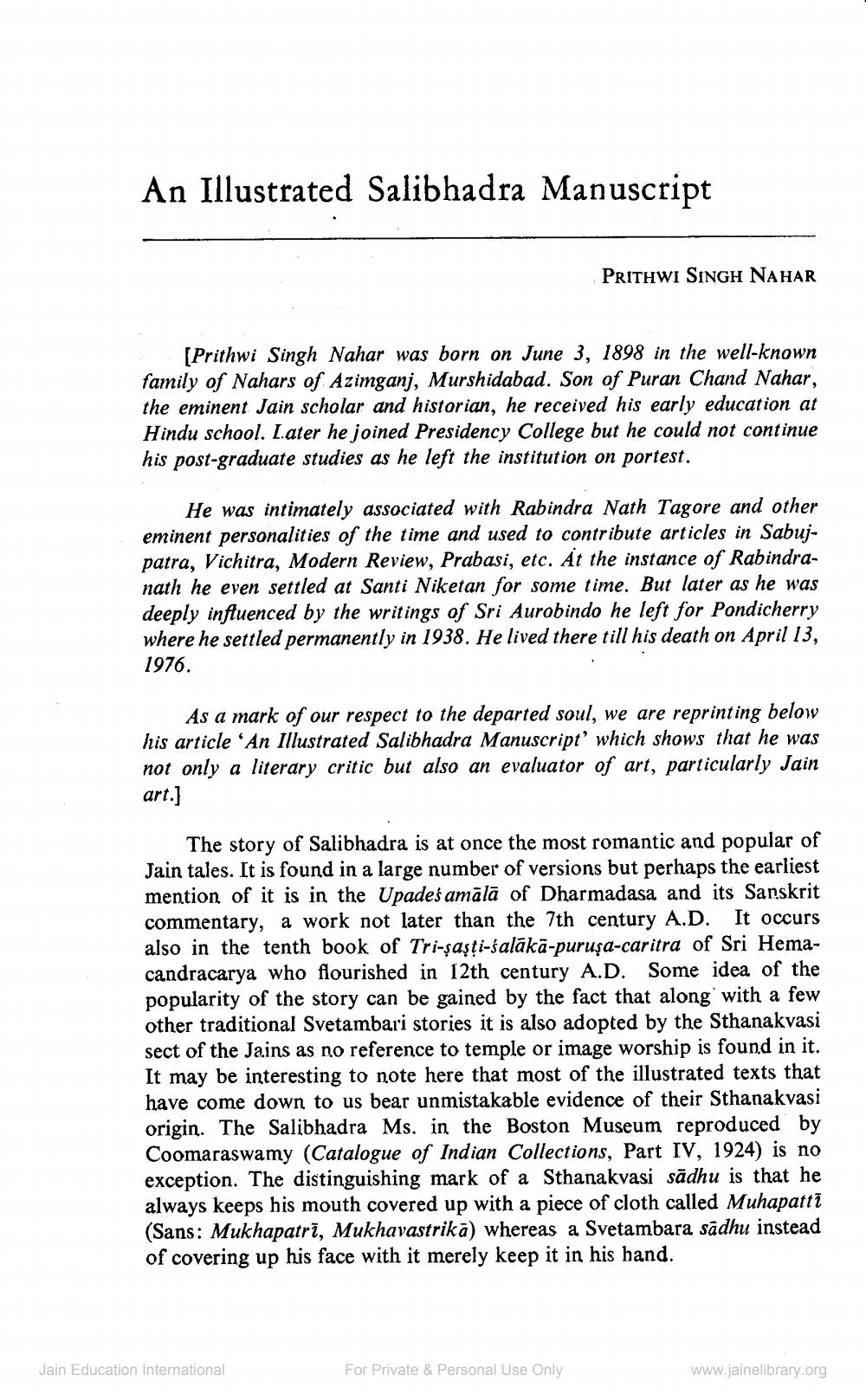Book Title: Jain Journal 1976 07 Author(s): Jain Bhawan Publication Publisher: Jain Bhawan Publication View full book textPage 8
________________ An Illustrated Salibhadra Manuscript PRITHWI SINGH NAHAR . [Prithwi Singh Nahar was born on June 3, 1898 in the well-known family of Nahars of Azimganj, Murshidabad. Son of Puran Chand Nahar, the eminent Jain scholar and historian, he received his early education at Hindu school. I.ater he joined Presidency College but he could not continue his post-graduate studies as he left the institution on portest. He was intimately associated with Rabindra Nath Tagore and other eminent personalities of the time and used to contribute articles in Sabujpatra, Vichitra, Modern Review, Prabasi, etc. At the instance of Rabindranath he even settled at Santi Niketan for some time. But later as he was deeply influenced by the writings of Sri Aurobindo he left for Pondicherry where he settled permanently in 1938. He lived there till his death on April 13, 1976. As a mark of our respect to the departed soul, we are reprinting below his article 'An Illustrated Salibhadra Manuscript' which shows that he was not only a literary critic but also an evaluator of art, particularly Jain art. The story of Salibhadra is at once the most romantic and popular of Jain tales. It is found in a large number of versions but perhaps the earliest mention of it is in the Upadešamālā of Dharmadasa and its Sanskrit commentary, a work not later than the 7th century A.D. It occurs also in the tenth book of Tri-şaşti-salākā-puruşa-caritra of Sri Hemacandracarya who flourished in 12th century A.D. Some idea of the popularity of the story can be gained by the fact that along with a few other traditional Svetambari stories it is also adopted by the Sthanakvasi sect of the Jains as no reference to temple or image worship is found in it. It may be interesting to note here that most of the illustrated texts that have come down to us bear unmistakable evidence of their Sthanakvasi origin. The Salibhadra Ms. in the Boston Museum reproduced by Coomaraswamy (Catalogue of Indian Collections, Part IV, 1924) is no exception. The distinguishing mark of a Sthanakvasi sādhu is that he always keeps his mouth covered up with a piece of cloth called Muhapatti (Sans: Mukhapatrī, Mukhavastrikā) whereas a Svetambara sådhu instead of covering up his face with it merely keep it in his hand. Jain Education International For Private & Personal Use Only www.jainelibrary.orgPage Navigation
1 ... 6 7 8 9 10 11 12 13 14 15 16 17 18 19 20 21 22 23 24 25 26 27 28 29 30 31 32 33 34 35 36 37 38 39 40 41 42 43 44 45 46 47 48 49
